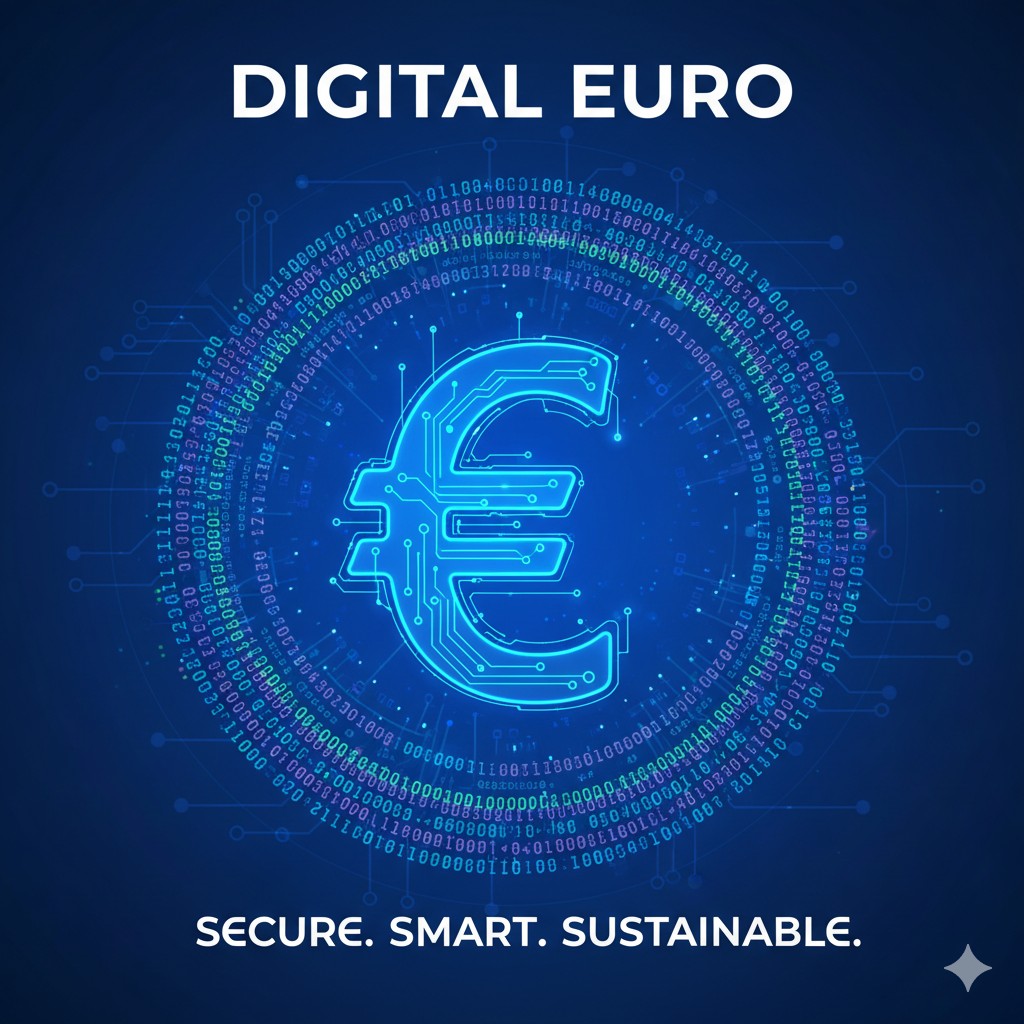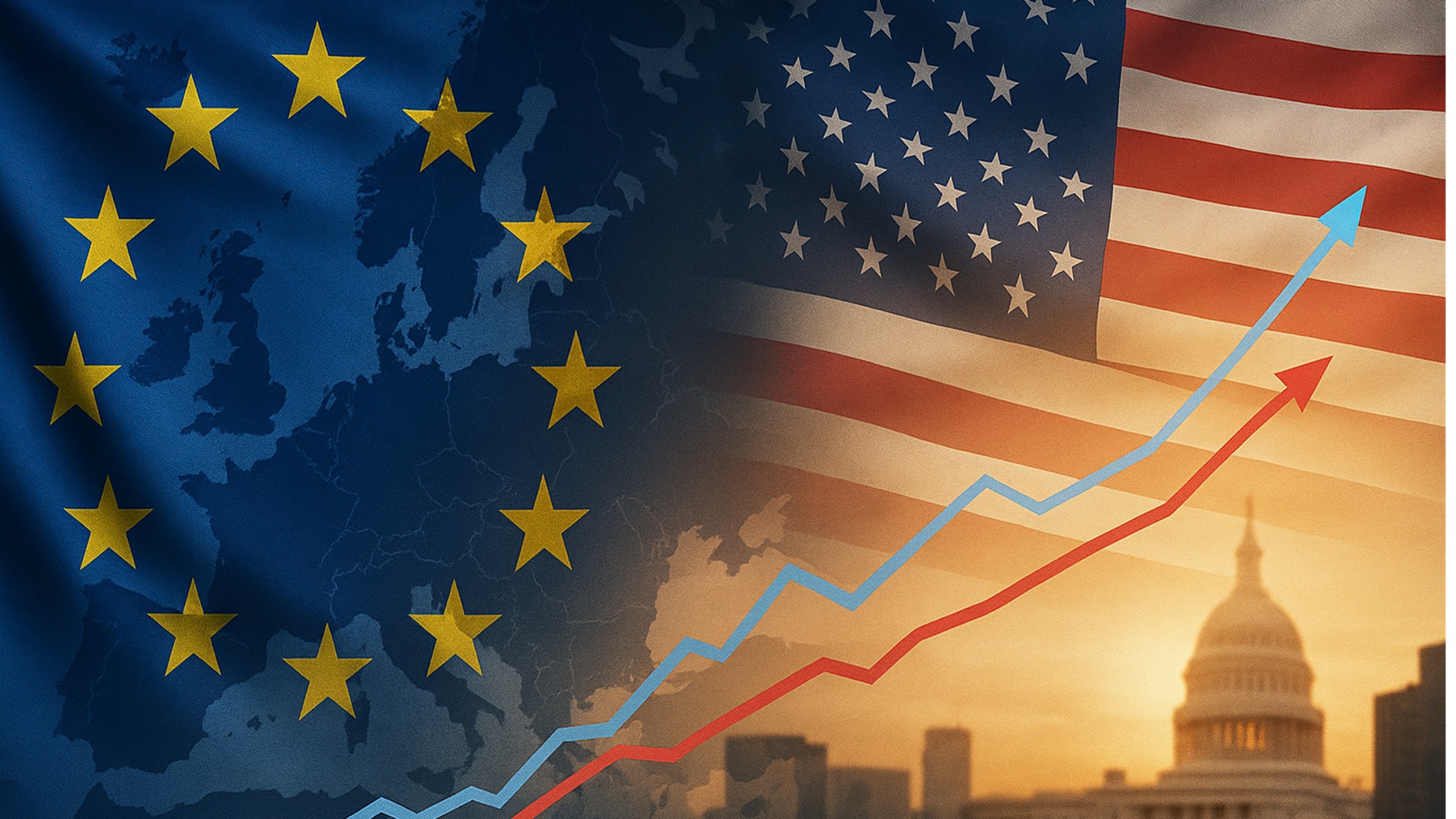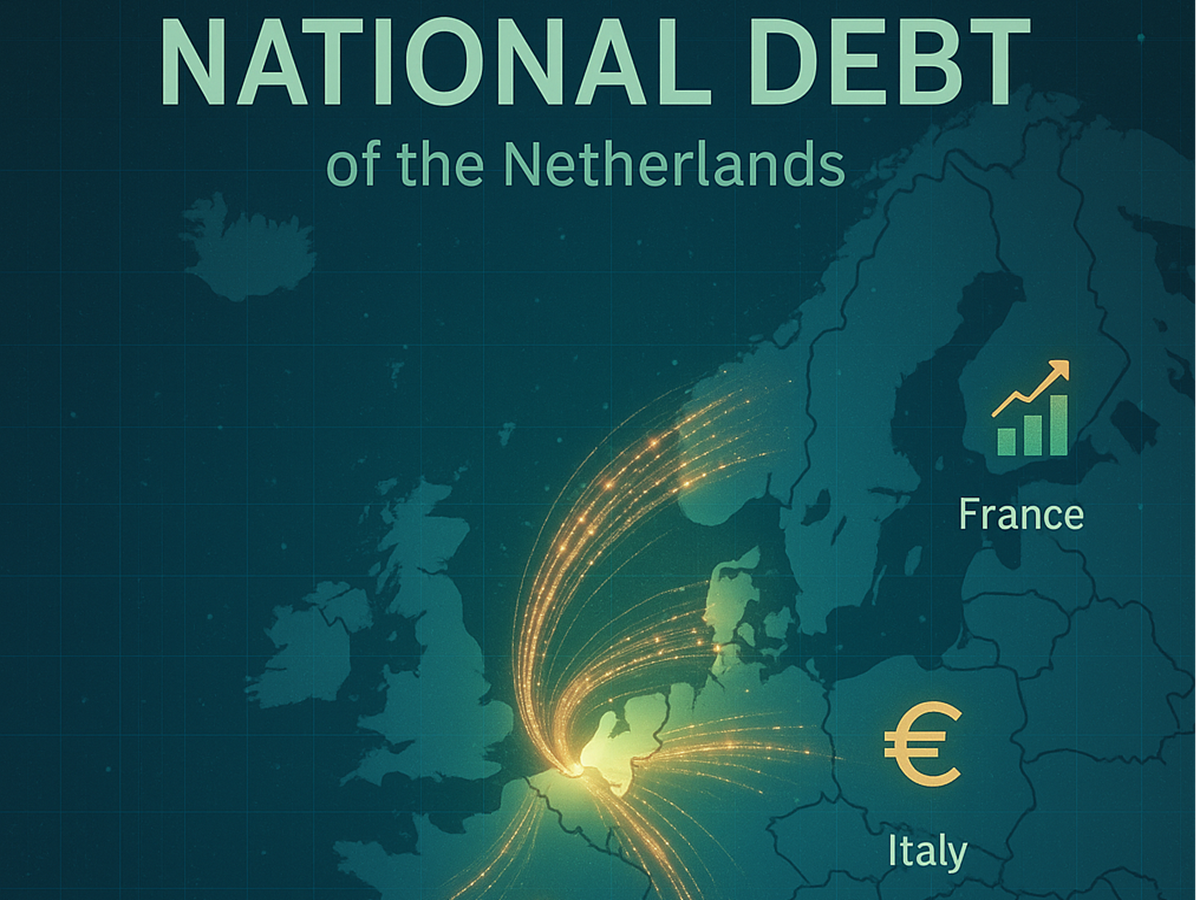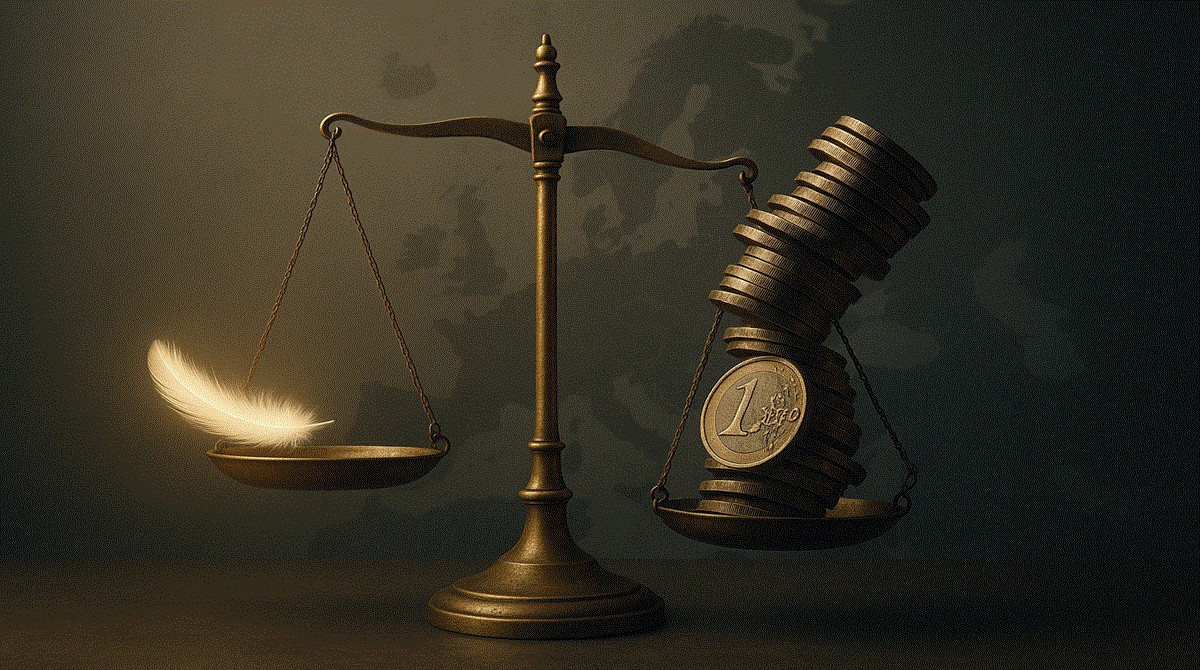The Digital Euro: Europe’s Leap Into the Future of Money
Student-friendly explainer of what the digital euro is, why the ECB wants it, how it could work, privacy questions, and what it means for people and banks.

What is the digital euro?

The digital euro would be a central bank digital currency (CBDC) — euro money issued by the European Central Bank (ECB), but in digital form only. It would be as safe as cash because it is a direct claim on the central bank, not on a private bank.
You could keep it in a digital wallet (inside your banking app or a new ECB-backed app) and use it to pay in stores or online. The ECB says it should work online and offline, so small payments would still be possible if the internet is down.
Why does Europe want it?
- Monetary sovereignty: make sure euro payments stay under European control as crypto, stablecoins and Big Tech systems grow.
- Less dependence on non-EU networks: today, many cards and wallets run on non-European rails. A digital euro would be a European backbone.
- Future-proof money: other big economies are testing CBDCs; the EU doesn’t want to fall behind.
How might it work?
Design plans point to a two-tier model: the ECB issues digital euros; private banks and payment firms provide wallets and customer support. This way, the ECB does not replace banks.
Open questions the ECB and lawmakers still need to fix:
- Holding limits: to stop people moving too much money out of bank deposits during a crisis.
- Fees: will basic payments be free for users and shops?
- Privacy rules: how to stop crime while protecting normal users’ data.
Privacy and trust
Cash is private; digital payments leave a trail. The ECB says a digital euro will offer strong privacy, especially for small offline payments. Civil-rights groups worry about surveillance. Too little privacy reduces trust; too much privacy could make it hard to fight fraud and money laundering. Finding the right balance is key.
What could it mean for citizens?
- Universal acceptance: like cash, usable across the euro area.
- Financial inclusion: a simple wallet could help people without a bank account join digital payments.
- Resilience: if a private network fails, a state-backed option keeps payments running.
Trade-off: if it is too attractive to hold digital euros, banks could lose deposits, which might raise loan costs. That is why holding limits and design choices matter.
The global race
Over 100 countries are exploring CBDCs. China’s digital yuan is far along. The Bahamas, Nigeria and Jamaica have already launched. Europe’s project is slower and careful, but it would be one of the largest CBDC pilots in the world.
Big open questions
- Will it replace cash or only complement it? (Officials say cash will stay.)
- Will people trust a central-bank wallet as much as their bank’s app?
- Could governments set temporary limits in a crisis (for example, on very large transfers)?
- Could a successful digital euro boost the euro’s global role in trade and finance?
Bottom line
The digital euro could make payments faster, safer and more inclusive, and strengthen Europe’s independence. But it also raises hard questions about privacy and the role of banks. The choices Europe makes now will decide whether the digital euro becomes a trusted everyday tool or a controversial experiment.
Note: This explainer summarizes the public discussion around the ECB’s digital euro project as of 2025. It is educational content, not legal or financial advice.
More articles
Related EU debt and fiscal insights to explore next.

11 Nov 2025
Can the US Handle More Debt Than Europe?
Several EU countries are already above 100% debt-to-GDP, just like the United States. Yet markets treat US debt very differently. This article explains why.

07 Nov 2025
Europe's Trillion-Euro Question: When Is National Debt an Investment?
As Europe faces the colossal costs of the green and digital transitions, the old rules of austerity are being challenged by a new logic: borrowing not for consumption, but for survival and future growth.

05 Nov 2025
The 'Swedish Wonder': National debt is falling and the live tracker is green
In an EU where most national debts are rising, Sweden is doing the opposite. With a debt ratio of just 34% and a declining counter, we look at how the 'top of the class' manages this outside the Eurozone.

01 Nov 2025
Ticking Up by €118/Second: Is the Netherlands Still Europe's 'Frugal' Leader?
The Dutch national debt is rising by €118 every second. While its 42.7% debt-to-GDP ratio remains well below the EU limit, this live tracker reveals a more complex picture compared to its European neighbors.

25 Oct 2025
Europe’s Debt Thermometer, Q2 2025: Who’s Up, Who’s Down — and Why It Matters
New Eurostat data for Q2 2025 reveals a Europe moving in two directions: while some countries’ debt-to-GDP ratios climbed, others managed to bring them down. Here’s what’s driving the shift beneath the surface.

21 Oct 2025
The End of Free Money: Europe’s Silent Debt Crisis
As interest rates rise, governments face a new reality. The question is no longer if debt becomes a problem, but when.